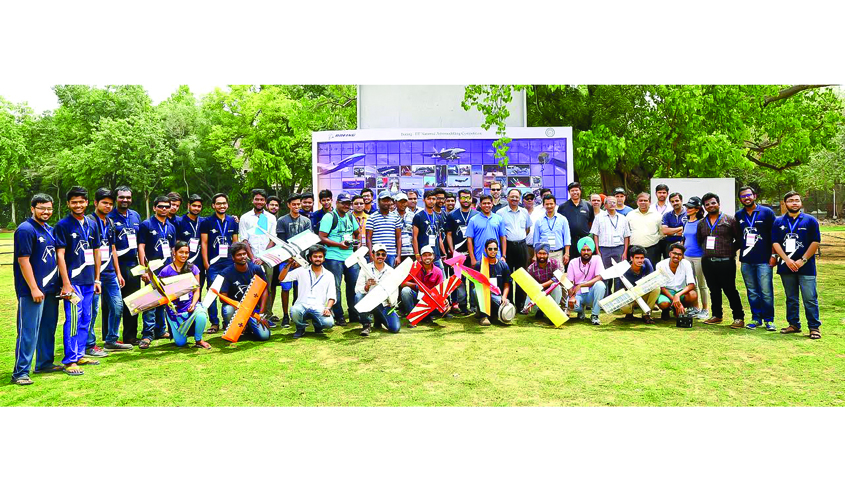Professor P.V.M. Rao from the department of Mechanical Engineering, IIT Delhi, said that a total of 28 zonal finalists advanced to the national-level finals. “Platforms provided by aerospace giants such as Boeing inspire and motivate students to explore avenues of innovation while honing their skills towards a future in aviation,” said Rao.
On the sidelines of this event, The Sunday Guardian spoke to PRATYUSH KUMAR, President, Boeing India, on Boeing’s future plan in India and the future of aersopace engineering. Excerpts:
Q. Boeing is getting into the defence sector. What are the challenges for you?
A. Well, so as to “Make in India”, we have to invest in skills in factory, in quality system and in support; so we are doing that. The first step towards that is to have the manpower and what you see here today is very critical. It is all about capturing the best talent and capturing the hearts and minds of the young talent that will run through this whole aerospace vertical. In terms of this, there is no such investment that is there, the challenge is skilled work force, to have a skilled workforce for aerospace manufacturing. Aerospace is not just one system, for that you need to build an engine, the avionics, the radar system, and then there are other appliances and there is a full eco-system to this. So we are tracking that one at a time and we are confident that in the near future, India will be a force to reckon with in the global world.
Q. You have been in this position since 2012 and you have seen the way UPA worked and you have also seen the way the present NDA is functioning. Do you see any major changes in terms of working now?
A. At a high level, I would say that the “Make In India” branding is great, because it simplifies my company’s performance strategy. In terms of intent and decision making, we have seen more speed and velocity now than that we have seen in the past. Ease of doing business is also a work in progress — some promise has been made.

Q. In the Commercial Aviation Sector, India is an emerging market. Where does Boeing see itself in the Indian market?
A. India is the fastest growing commercial aviation market in the world with over 20% traffic growth. If you look at the fundamental forces, the demographics, the movement in GDP, it all points towards a secular continued growth of the century. With that growth also comes the obvious challenge of infrastructure. We built some airports a few years ago and they are already running at full capacity. When you try to land to Mumbai, you have to circle for a while, even Delhi has that problem. We are at full capacity both on the ground and at the air. So probably working with the government will help create more capacity and once the aircraft comes in, on an average, you need about seven engineers attending to that aircraft, that skilled workforce is not available. We are working with the government and the industry. Those are the challenges, but the opportunity is tremendous.
We are continuing to grow our footprint in India. We have tripled our activities in India in the past three years. This year, our target is to source services and components in India, which is worth over Rs 4,500 crore. We are launching our joint venture with the Tatas this year.
Q. What are the factors that could promote aerospace technology in India?
A. Multiple steps are required. The first one is capturing the young talent and mostly high school students and early college students. Then, it’s all about giving them the right curriculum so as they can be ready for the industry. It’s all about giving them on-the-job practical training so as to make them ready for an aerospace career in the market as it is an exciting career.
Q. What are Boeing’s evolving partnerships with regards to academics and industries in India?
A. The partnership with educational institutions is a must to get ready and develop the talent we need for the market. The number of students who participate and the sheer talent on display is a testimonial to the immense potential of India’s engineering sector. As you know, aerospace is a sunrise sector in India and we are hiring ourselves in India in leaps and bounds. Our goal is to build a set of 2,000 engineers and we are also getting into the process of hiring people for manufacturing aerospace components, systems sub systems and for that you need a flight path for students. So it’s all about having the right curriculum and also about having the right practical experience on the job before they show up for full-time work. We had a good history of partnership with five IITs. IIT Delhi is a new edition and I am an alma mater of IIT Delhi so, of course, I am interested in making sure that it takes off from here.

